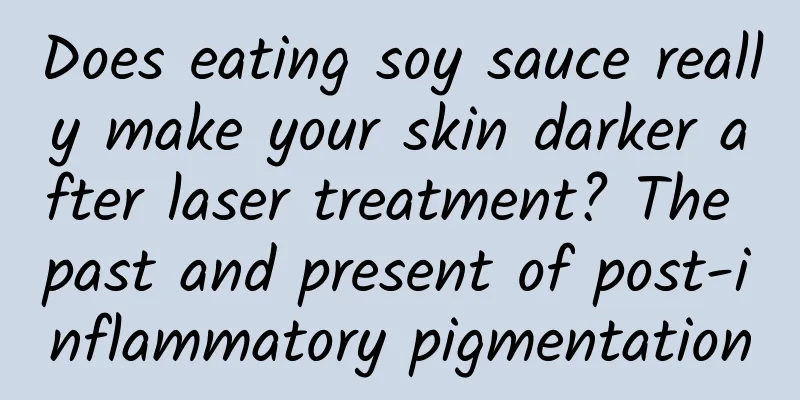Blowing into the wound when injured? Keep this guide!

|
"My little ancestor, how could you be so careless and get hurt!" "Does it hurt? Let me blow it for you!" Trauma often occurs in our daily lives. Different wound locations, sizes, depths, and cleanliness require different treatment methods. However, the lack of professional medical knowledge can lead many people to "go astray" when treating wounds, causing further infection, prolonged healing time, and unnecessary complications. Can blowing air really relieve the pain of a wound? Many people are used to blowing air on the wound when they are injured, trying to relieve the pain in this way. But is this method really effective? Let's first understand the cause of wound pain. There are free nerve fibers and receptors widely distributed under our skin epidermis. When we are stimulated by trauma or other stimuli, the receptors and pain nerves will be stimulated, causing pain symptoms. Image source: Pixabay There are three main ways to relieve pain: 1. psychological intervention; 2. distraction; 3. drug intervention. Some studies have suggested that appropriate temperature can also relieve pain. However, these studies have small sample sizes and limited methods, and the results lack scientific basis. Blowing air into the wound stimulates the sense of touch of the skin around the wound, thus diverting our attention and making us feel that it seems to be "less painful". At the same time, the evaporation of sweat from the pores can reduce the local temperature to a certain extent to inhibit the pain nerves. But no matter what the reason, this way of "relieving pain" is not advisable. On the one hand, it is not clear whether it can really relieve pain; on the other hand, saliva contains more than 100 different microorganisms and bacteria, which may cause secondary infection of the wound. If the person blowing the air transmits periodontal disease and oral special pathogens to the wound, it will be a double blow to the injured person! How to deal with wounds in life? We come into contact with a variety of wounds in our daily lives. Many people have weak knowledge of emergency treatment (in most cases, people use saliva to disinfect wounds, herbs, powder bandages, etc.), do not pay attention to wound treatment, delay the best time for treatment, and even cause irreversible damage. Here we share treatment methods for three common types of wounds: abrasions, lacerations and burns. ① Abrasion Abrasions are superficial wounds of the skin, and their deep skin tissues are intact. The treatment principle is "first clean, second eliminate, and third evaluate". First cleaning: Clean the wound with normal saline (0.9% sodium chloride solution) to rinse off foreign matter attached to the wound. Secondary disinfection: auxiliary iodine disinfection, spreading from the wound to the surrounding area within 5 cm, and disinfection 2 to 3 times. Three assessments: After cleaning and disinfection, the abrasion surface needs to be assessed. If the wound is shallow, small in area, and has no obvious dirt attached, there is no need for excessive bandaging. If the area is slightly larger, or it is an abrasion on a child, it is recommended to bandage it with gauze and protect it to avoid secondary damage to the fresh wound. If the wound area is large and the attached dirt cannot be cleaned, or is accompanied by local bleeding, local swelling, and obvious pain, it is recommended to seek medical attention in time. ② Laceration Lacerations include a series of injuries that cause skin ruptures due to sharp objects, falls, etc., as well as wounds in the dermis and fat layers of the skin. The principle of treatment is "stop first, evaluate second, and send to a doctor third". Stop the bleeding: I have to say it three times. Stop the bleeding first! Stop the bleeding first! Stop the bleeding first! First, use clean gauze to compress the most severe bleeding area or the proximal artery of the wound. Second assessment: After pressing the wound for 5 to 10 minutes, slowly open the gauze to observe the wound surface and assess its size and depth. If it is caused by a clean sharp object, the wound surface is shallow, less than 1 cm long, and the wound surface is neatly closed into a line and there is no continuous bleeding, it can be bandaged after cleaning, disinfecting, and applying antibacterial ointment, and wait for natural healing. Third, go to the hospital for more professional and complete debridement, disinfection, suturing and bandaging treatment, and inject tetanus vaccine, immunoglobulin or antitoxin, and use auxiliary anti-inflammatory drugs to avoid bacterial and tetani infection. ③Burns The principles for treating burns are "one, get away; two, rinse; three, take off; four, cover; five, seek medical treatment." First, stay away from heat sources to avoid secondary injuries. Second flush: Since a newly burned wound will have a lot of residual heat penetrating the tissue, it is necessary to cool it down and dissipate the heat in time, otherwise it will cause damage to the deep tissue. Therefore, we need to flush with clean running cold water for 20 to 30 minutes to reduce heat intrusion. Three removals: Use scissors or other tools to remove clothing around the wound, avoiding damaging the blisters and increasing the risk of infection. Cover the wound with sterile gauze or clean towels immediately and go to a regular hospital for treatment. If the burn area is small and the area is slightly red and swollen, low-concentration povidone-iodine and saline can be used to clean the wound, and antibiotic ointment and growth factors can be applied externally to prevent infection and promote healing. When you have a sprain, what should you do when faced with ice or heat? In our daily life, we may also encounter local soft tissue injuries such as ankle sprains. Some people say that ice should be applied, while others say that hot compress is better. How should we choose? In the early stage of trauma, that is, within 48 to 72 hours after injury, ice compress is recommended. On the one hand, ice compress lowers the temperature of the injured part, triggers peripheral vasoconstriction, reduces exudation and local tissue edema. On the other hand, ice compress can inhibit sensory nerves, reduce metabolism and inflammatory response, and play a certain analgesic role. We can apply ice compress for 10 to 20 minutes each time, with an interval of 2 to 3 hours between each time. After 48 to 72 hours of acute injury, bleeding has basically stopped and pain has mostly eased. At this time, ice compresses are not very meaningful. Instead, hot compresses can better relieve muscle spasms and promote blood circulation. However, there are no strictly designed clinical studies on the time and optimal temperature of hot compresses. According to some clinical articles and data, 40 to 50°C wet compresses are recommended, and the hot compress time should be controlled within 20 minutes. Of course, whether to use ice compresses or hot compresses depends on the location of the trauma, the type of trauma, and the condition of the injury. Do not intervene blindly. There are many types of trauma, and they occur suddenly. Only by correctly mastering the wound treatment method can secondary injuries be effectively avoided! Source: Chongqing Science and Technology Museum Author: Wei Yi, PhD of Chongqing Medical University, one of the top ten science popularization ambassadors in China Statement: Except for original content and special notes, some pictures are from the Internet. They are not for commercial purposes and are only used as popular science materials. The copyright belongs to the original authors. If there is any infringement, please contact us to delete them. |
<<: Drink more water? Beware of water poisoning!
>>: Acute poisoning is very harmful and timely treatment is the key
Recommend
Zhong Nanshan: Optimistically speaking, we can return to the pre-epidemic state in the first half of next year
At present, my country's epidemic prevention ...
How to treat severe cervical erosion in women
How to treat severe cervical erosion in girls? Th...
The number of antral follicles in normal women
Normally, no one pays attention to the antral ovu...
What are the ways to get over a breakup? How long does it take for a guy to get over a breakup?
Everyone knows that the most embarrassing thing a...
How to distinguish the authenticity of star anise? What will happen if you put too much brine in star anise?
Star anise is a common ingredient in brine, with ...
What medicine should be used for female neck warts
Filial warts are a common skin disease that is pr...
How to drive a car more fuel-efficiently? Is there any way to make a car more fuel-efficient?
In addition to the cost of car maintenance, the r...
Causes of vaginal itching and yellow discharge
There are many common problems in the genitals. W...
Can I eat apricots during menstruation?
Whenever apricots are on the market, many female ...
Women want to urinate as soon as they lie down
Both men and women may experience increased urina...
How many days will the pain last after cervical conization?
What patients who have undergone cervical conizat...
Pain in lower right abdomen during 5 months of pregnancy?
If you experience lower abdominal pain during pre...
What can't you eat during menstruation?
When you have your period, you need to pay specia...
Is it okay to have sex on the last day of your period?
Menstruation is a normal physiological phenomenon...
Did your child become deaf because of ear picking? Beware! Don’t do these ear-damaging behaviors anymore
You always feel itchy in your ears and want to cl...









